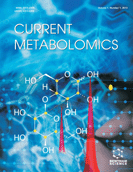Abstract
Background: Gas Chromatography Mass Spectrometry (GCMS)-based metabolomics has been shown to substantially contribute to understanding of the physiological state of mammalian producer cells leading to improved large-scale production of biopharmaceuticals. In this study, GCMSbased metabolomics (global metabolite analysis) approach was used to understand the effects of different levels of serum and glutamine on metabolite profiles associated with cell growth behaviour and insulin-like growth factor 1 (IGF1) protein production.
Methods: CHO-KI cells producing IGF1 were obtained from American Type Culture Collection (ATCC) and grown in T- ask (37°C, 5 % CO2) until 70-80 % conuent in optimized medium, RPMI 1640 with different levels of of serum (%) and glutamine (mM). The different compositions of serum and glutamine were based on three levels full factorial design generated by MODDE, SIMCA P+Version 12 (Umetrics). Samples were then taken at 8-hourly intervals for routine cell counting, biochemical responses, IGF1 protein concentration and global metabolite analysis (GCMS). Conditioned media from each time point were spun down before injection into GCMS. Data from GCMS were then transferred to SIMCAP+ Version 12 (Umetrics) for chemometric evaluation using Partial Least Square Discriminant Analysis (PLS-DA).
Results: Experiment Run 3 which produced the highest cell density was discriminated from other runs based on the extracellular metabolites. This indicates that Run 3 although supplied with very little glutamine, was able to undergo active metabolism including glycolysis and as such has efficiently used up the nutrient sources to produce the highest cell number. However, no clear relationship can be delineated for the IGF1 production.
Conclusion: Global metabolite analysis approach has been proven to be able to give more insights into the metabolism of cells as compared to routine biochemical studies where data was less informative.
Keywords: Chinese hamster ovary (CHO)-K1, gas chromatography mass spectrometry (GCMS), glutamine, insulin-like growth factor 1 (IGF1), metabolomics, principle component analysis (PCA), serum.
 62
62 5
5








.jpeg)








